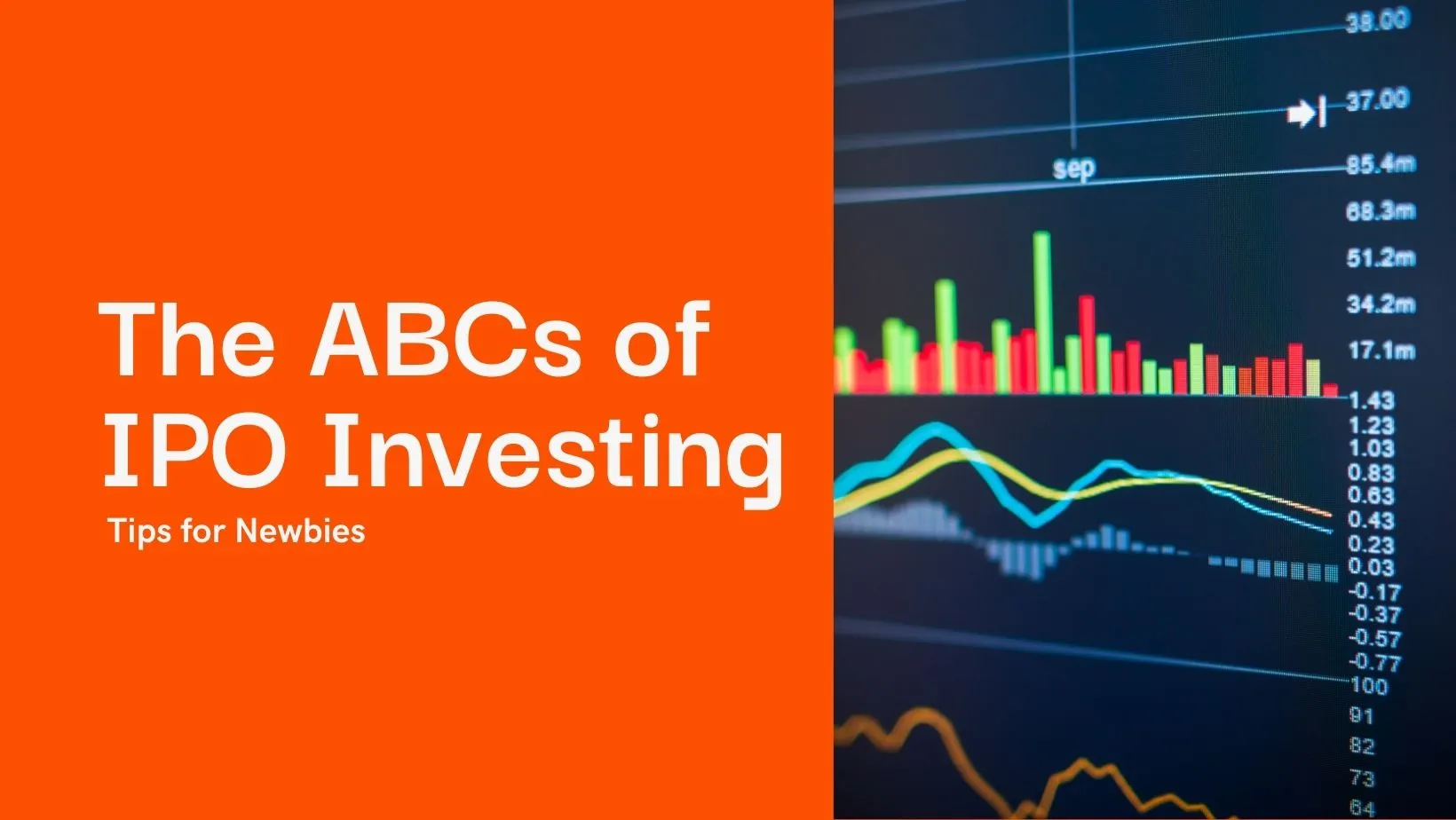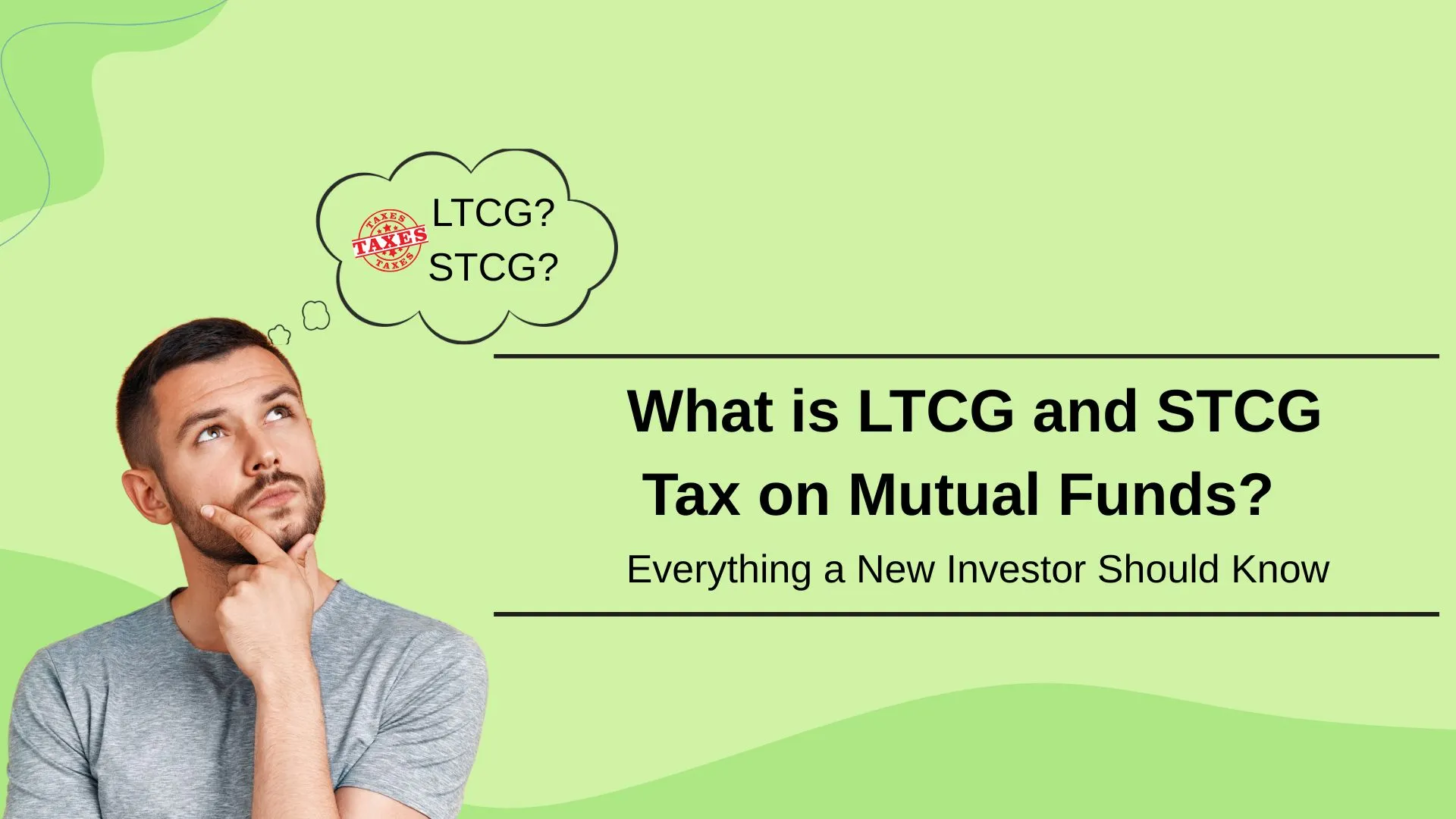Top Mistakes Beginner Investors Make and How to Avoid Them
Investing is a crucial step toward building wealth and securing your financial future. However, navigating the investment world can be overwhelming for beginners, and mistakes are common. While learning through experience is valuable, avoiding pitfalls early on can save you time, money, and stress. Here are the top mistakes beginner investors make and how to avoid them. 1. Lack of Clear Financial GoalsOne of the biggest mistakes is investing without clear financial objectives. Jumping into the market without knowing why you are investing or what you hope to achieve can lead to haphazard decision-making.How to Avoid:· Define your goals: Are you saving for retirement, a house, or your child’s education?· Set timelines: Short-term (1-3 years), medium-term (3-5 years), and long-term (5+ years).· Choose investments that align with your goals and risk tolerance. 2. Timing the MarketMany beginners attempt to time the market, hoping to buy low and sell high. This strategy often backfires, as even seasoned investors struggle to predict market movements accurately.How to Avoid:· Focus on time in the market rather than timing the market.· Adopt systematic investment plans (SIPs) to invest consistently.· Stay committed to your investment strategy during market fluctuations. 3. Ignoring DiversificationPutting all your money into a single stock or asset class can be disastrous if that investment performs poorly.How to Avoid:· Spread your investments across asset classes (equity, debt, gold, real estate, etc.).· Invest in mutual funds or ETFs for built-in diversification.· Regularly rebalance your portfolio to maintain the desired asset allocation. 4. Chasing High ReturnsThe lure of high returns can tempt beginners to invest in speculative assets or schemes promising quick riches.How to Avoid:· Evaluate the risk-return tradeoff before investing.· Avoid get-rich-quick schemes and investments with promises that seem too good to be true.· Stick to proven investment instruments with a solid track record. 5. Neglecting Emergency FundsInvesting without an emergency fund can force you to liquidate investments prematurely in case of unexpected expenses.How to Avoid:· Build an emergency fund covering 6-12 months of expenses.· Keep this fund in liquid or low-risk investments like savings accounts or liquid funds. 6. Overlooking Fees and ExpensesInvestment fees, such as brokerage charges and expense ratios, can erode returns over time if not accounted for.How to Avoid:· Compare fees for mutual funds, ETFs, or brokerage accounts before investing.· Choose low-cost investment options when possible.· Regularly review your portfolio to ensure fees aren’t eating into your returns. 7. Acting on EmotionsFear and greed often drive investment decisions. Selling during market downturns or buying at market peaks due to hype can lead to losses.How to Avoid:· Stick to your investment plan and avoid impulsive decisions.· Focus on long-term goals rather than short-term market noise.· Seek professional advice if emotions cloud your judgment. 8. Not Doing Enough ResearchBlindly following tips from friends, family, or social media can lead to uninformed investment choices.How to Avoid:· Educate yourself about different investment options. Analyse the fundamentals of any investment before committing money.· Consult credible sources or financial advisors for guidance. 9. Ignoring Tax ImplicationsTaxes can significantly impact your investment returns if not planned properly.How to Avoid:· Understand the tax treatment of your investments (e.g., capital gains, dividends).· Utilise tax-saving instruments like ELSS (Equity-Linked Savings Schemes) or PPF (Public Provident Fund).· Plan your investments to minimise tax liabilities. 10. ProcrastinatingWaiting for the "perfect" time to start investing often results in missed opportunities for wealth creation through compounding.How to Avoid:· Start small but start early. Even modest investments can grow significantly over time.· Take advantage of tools like SIPs to build discipline.· Remember, the best time to start investing was yesterday; the second-best time is today. ConclusionInvesting is a journey that requires patience, discipline, and continuous learning. While mistakes are part of the process, being aware of common pitfalls and taking proactive steps to avoid them can set you on the path to financial success. When in doubt, seek advice from a certified financial advisor to make informed decisions.Start small, stay consistent, and let your investments work for you over time. Happy investing!
Read MoreHow to Teach Kids About Money and Investing
Financial literacy is one of the most important life skills you can teach your children. Introducing concepts like saving, budgeting, and investing at an early age not only sets them up for a secure financial future but also helps them make informed decisions throughout their lives. Here are practical steps to teach kids about money and investing in an engaging and age-appropriate way. 1. Start with the Basics: The Value of MoneyKids need to understand money and how it works before they can explore more complex financial topics like investing.Tips:� Explain how money is earned through work and how it can be used to buy goods and services.� Use play money or games like Monopoly to demonstrate transactions.� Introduce the concept of needs vs. wants to help them prioritise spending. 2. Introduce SavingTeaching kids to save is the first step toward building a habit of financial discipline.Tips:� Please give them a piggy bank or set up a savings jar to collect spare change.� Encourage them to save for specific goals, like a toy or a book, to teach delayed gratification.� Offer a small interest on their savings to introduce the concept of earning money through saving. 3. Teach BudgetingA simple budget can help kids understand how to allocate money for different purposes.Tips:� Use a three-jar method: one for saving, one for spending, and one for sharing (charity).� Let them plan a budget for their allowance or a small project, like a birthday party.� Show them how to track expenses using a notebook or an app designed for kids. 4. Explain the Concept of InvestingOnce your child understands saving, introduce them to the idea of growing money through investing.Tips:� Use simple analogies, like planting a tree, to explain how money can grow over time.� Start with basic investment vehicles like a savings account or a child-friendly mutual fund.� Introduce the concept of risk and reward using examples they can relate to, like trading marbles or cards. 5. Make It InteractiveHands-on activities and real-world examples make financial lessons more engaging.Tips:� Open a kid-friendly savings account together and show them how deposits work.� Let them "invest" in their favourite and by buying a small number of shares (with your guidance).� Play investment board games or online simulators to teach them about markets and decision-making. 6. Teach the Power of CompoundingThe earlier kids understand compounding, the better they will appreciate the benefits of starting early.Tips:� Use visual aids like charts or graphs to show how money grows over time.� Share stories of successful investors who started young.� Calculate how much their savings can grow if they set aside a small amount each month. 7. Encourage Entrepreneurial ThinkingEncouraging kids to earn money fosters a sense of independence and creativity.Tips:� Support small business ideas like lemonade stands, pet sitting, or crafts.� Help them set goals and track profits to understand business expenses and revenue.� Teach them to reinvest a portion of their earnings to grow their venture. 8. Discuss Financial ResponsibilityTeaching kids about money isn't just about earning and investing; it's also about making responsible decisions.Tips:� Discuss the importance of avoiding debt and living within one's means.� Teach them to give back by donating to causes they care about.� Talk about the consequences of impulsive buying and the value of thoughtful spending. 9. Leverage TechnologyThere are countless apps and tools designed to teach kids about money in a fun and interactive way.Suggestions:� Use apps like Greenlight, BusyKid, or PiggyBank to teach savings and investments.� Watch kid-friendly financial literacy videos together on platforms like YouTube.� Use online calculators to show how their savings can grow over time. 10. Lead by ExampleChildren learn more from what they see than what they hear. Be a role model in your financial habits.Tips:� Involve them in family financial discussions, like budgeting for groceries or planning vacations.� Share your own experiences with saving and investing.� Show consistency in practising what you preach. ConclusionTeaching kids about money and investing is a gradual process that should evolve as they grow. Start with simple concepts when they're young and introduce more complex topics as they mature. By giving your children the tools to manage money wisely, you're setting them up for a lifetime of financial confidence and independence. It's never too early to start teaching kids about money. The lessons you impart today will shape their financial future tomorrow.
Read MoreFinancial Planning for Millennials: Tips to Secure Your Future
Millennials often find themselves juggling multiple financial priorities, from paying off student loans to saving for a home, while also seeking to enjoy life experiences like travel and dining out. With these competing demands, financial planning can feel overwhelming. However, taking the right steps today can set you up for a secure and prosperous future. Here are actionable tips tailored for millennials to build a strong financial foundation. 1. Start with a BudgetA well-defined budget is the cornerstone of financial planning. Track your income and expenses to understand where your money is going. Use the 50/30/20 rule as a guide:· 50% for needs: Essentials like rent, groceries, and utilities.· 30% for wants: Entertainment, dining out, and hobbies.· 20% for savings and debt repayment: Build an emergency fund, pay down debt, and invest for the future.Budgeting apps like Mint, YNAB (You Need a Budget), or personal spreadsheets can simplify this process. 2. Build an Emergency FundLife is unpredictable, and having an emergency fund can provide a financial safety net. Aim to save 3-6 months' living expenses in a high-yield savings account. This fund will help you cover unexpected costs like medical bills, car repairs, or job loss without derailing your long-term goals. 3. Pay Down Debt StrategicallyMillennials often face significant student loans or credit card debt. To tackle this:· Focus on high-interest debt first (credit cards, personal loans) using the debt avalanche method.· Alternatively, use the debt snowball method by paying off smaller debts first for psychological motivation.· Consider refinancing student loans to lower interest rates, if feasible.Clearing debt early frees up resources for saving and investing. 4. Invest Early and RegularlyTime is your greatest ally when it comes to investing. Thanks to the power of compounding, even small contributions can grow significantly over time. Start with these steps:· Open a retirement account, such as a 401(k) or IRA, and contribute consistently.· Take advantage of employer-matching contributions if available—it’s essentially free money.· To balance risk and reward, invest in diversified assets such as mutual funds, ETFs, or index funds.Remember, you don’t need to be an expert—start with simple, low-cost options and build your knowledge over time. 5. Save for Big GoalsSet specific, measurable financial goals, whether it’s buying a home, starting a business, or planning a wedding. Break these into short-term (1-3 years), medium-term (3-7 years), and long-term (7+ years) categories. Allocate funds accordingly to achieve these milestones without disrupting your financial stability. 6. Get InsuredInsurance protects you and your loved ones from unexpected financial burdens. Key policies to consider include:· Health Insurance: Covers medical emergencies and routine care.· Life Insurance: Particularly important if you have dependents.· Disability Insurance: Provides income if you’re unable to work due to illness or injury.Shop around for policies that fit your needs and budget. 7. Embrace TechnologyMillennials have access to a wide range of financial tools and apps that make planning easier. Use robo-advisors for investment management, apps for tracking spending, and online calculators for retirement planning. These tools can simplify complex tasks and keep you on track. 8. Educate Yourself About Personal FinanceFinancial literacy is crucial for making informed decisions. Take the time to:· Read books and blogs on personal finance.· Follow credible finance influencers and experts.· Attend workshops or webinars on financial planning.Understanding concepts like compound interest, asset allocation, and tax planning will empower you to make smarter choices. 9. Plan for Retirement NowRetirement may feel like a distant goal, but starting early allows you to leverage compounding and build a sizable corpus. Contribute to retirement accounts like a 401(k) or Roth IRA and increase contributions as your income grows. Use retirement calculators to estimate how much you’ll need and adjust your savings plan accordingly. 10. Seek Professional AdviceIf you’re unsure about where to start or how to optimize your finances, consider consulting a financial advisor. They can help you create a personalized plan based on your goals, income, and risk tolerance. Many advisors now offer services tailored to millennials at affordable rates. ConclusionFinancial planning is a journey, not a one-time task. By adopting these strategies and staying disciplined, millennials can overcome financial challenges and secure their future. Remember, the key is to start early, stay consistent, and adapt your plan as life evolves. Your future self will thank you for taking these steps today.
Read MoreThe ABCs of IPO Investing: Tips for Newbies
Initial Public Offerings (IPOs) are often seen as the golden opportunity for investors to get in on the ground floor of a company’s public journey. But what exactly is an IPO, and how should beginners approach it? If you’re new to the world of IPOs, this blog will break down the basics and provide practical tips to help you make informed investment decisions.What Is an IPO?An IPO, or Initial Public Offering, is the process by which a privately owned company sells shares to the public for the first time. This allows the company to raise capital for growth, repay debts, or fund new projects. Once the shares are listed on the stock exchange, anyone can buy or sell them.For investors, IPOs present an opportunity to invest in a company during its early stages of being publicly traded. However, they also come with risks and require careful evaluation. Why Do Companies Launch IPOs?1. To Raise Capital: Companies use IPOs to generate funds for expansion, innovation, or acquiring other businesses.2. To Increase Visibility: Going public boosts a company’s reputation and credibility in the market.3. To Allow Early Investors to Cash Out: Founders and early-stage investors can sell some of their shares to realize gains. Should You Invest in an IPO?Before diving in, it’s important to evaluate whether investing in an IPO aligns with your financial goals and risk appetite. IPOs can be volatile, and not all of them deliver stellar returns. Here are some key aspects to consider:1. Growth Potential: Is the company operating in a growing industry with significant market potential?2. Financial Health: Review the company’s financial statements, profitability, and debt levels.3. Valuation: Compare the IPO price to the company’s earnings and industry peers to determine if it’s overvalued or fairly priced. How to Get Started with IPO Investing1. Understand the ProspectusThe prospectus is a document that provides detailed information about the company’s business model, financials, and risks. Read this carefully to understand the company’s strategy and future potential.2. Check the IPO TimelineEvery IPO has a specific timeline, including the application dates, allotment dates, and listing dates. Make sure you apply within the subscription window.3. Choose the Right BrokerYou’ll need a demat and trading account to apply for an IPO. Many brokers offer online IPO applications. Compare brokers for ease of use, charges, and services.4. Decide Your Investment AmountInvest only what you can afford to lose. IPO investments, like any equity investment, carry risks, and there’s no guarantee of returns.5. Understand the Allotment ProcessIPO allotments are based on demand. If an IPO is oversubscribed, retail investors are allotted shares through a lottery system. Key Tips for Newbie IPO Investors1. Start Small: Don’t invest a large sum in your first IPO. Gain experience before scaling up your investments.2. Avoid the Hype: Just because an IPO is trending doesn’t mean it’s a good investment. Focus on fundamentals, not hype.3. Diversify Your Portfolio: Avoid putting all your money into a single IPO. Spread your investments across different sectors and asset classes.4. Be Patient: Not all IPOs deliver instant returns. Some companies take years to grow into their valuations.5. Learn from Past IPOs: Study the performance of past IPOs in similar industries. This can give you insights into market behavior. Real-Life Example: A Tale of Two IPOs· IPO A: A technology startup launched its IPO with much fanfare. The company was profitable, had low debt, and operated in a high-growth industry. Investors who held on for three years saw their investment triple.· IPO B: A retail company launched an IPO at a high valuation. It struggled to meet growth expectations and delivered negative returns within the first year.This comparison highlights the importance of due diligence and long-term thinking. ConclusionInvesting in IPOs can be exciting, but it’s not without its challenges. For beginners, the key is to approach IPOs with caution, conduct thorough research, and invest based on logic rather than emotions. By following the tips outlined in this blog, you’ll be better equipped to navigate the world of IPO investing and make informed decisions.Remember, every IPO is unique. Some may offer tremendous growth opportunities, while others might fall short of expectations. Take your time, learn as much as you can, and always invest wisely.
Read MoreMutual Funds vs Traditional Investment Products: Which One Aligns with Your Financial Goals?
In today’s dynamic financial environment, investors are often torn between staying loyal to traditional products like Fixed Deposits (FDs), PPF, and LIC policies, or stepping into market-driven investments like mutual funds.Each option has its place, but the best choice depends on your financial objectives, time horizon, and comfort with risk. Let’s break down how these options perform across five critical dimensions. 1. Returns vs. Risk: The Core Trade-Off Investment Option Type Risk Level Expected Returns Mutual Funds (Equity) Market-linked Moderate to High 10%–14% (long-term) Fixed Deposits (FDs) Fixed-income Low 6%–7% (pre-tax) Public Provident Fund Government-backed Very Low ~7.1% (tax-free) LIC Traditional Plans Insurance + Savings Very Low 4%–6% (effective yield) 💡 Insight: Mutual funds can generate higher returns over time, but involve market volatility. In contrast, traditional tools offer peace of mind and capital safety, though they may struggle to beat inflation after taxes. 2. Liquidity & Lock-In: Access Matters Investment Option Liquidity Lock-in Period Mutual Funds High (except ELSS) ELSS: 3 years; others: No lock-in FDs Moderate 1–5 years (premature exit penalty) PPF Low 15 years (partial access after 5 years) LIC Policies Low 10–20 years (early exit limits benefits) 💡 Insight: Mutual funds, particularly liquid and ultra-short-term debt funds, are ideal for short-term needs due to better accessibility. 3. Taxation: A Hidden Game-Changer Instrument Tax on Returns Tax Saving on Investment Equity Mutual Funds 10% on LTCG above ₹1 lakh ELSS qualifies under Section 80C FDs Fully taxable as per income slab No tax benefits PPF Fully tax-free (EEE benefit) Eligible under Section 80C LIC Policies Maturity tax-free (Sec 10(10D)) Premium qualifies under 80C 💡 Insight: Equity mutual funds offer good tax efficiency for long-term investors, especially through ELSS. However, PPF remains unbeatable for those in higher tax brackets due to its EEE (Exempt-Exempt-Exempt) status.4. Matching Tools to Goals Financial Goal Most Suitable Instrument Short-term parking (1–2 years) Liquid Mutual Funds, FDs Long-term growth (5+ years) Equity Mutual Funds Tax-free retirement corpus PPF, NPS + Mutual Funds Life insurance protection Pure Term Insurance (not traditional LIC) Capital stability PPF, Arbitrage Funds, Short-term FDs 💡 Insight: Avoid mixing investment and insurance—a common pitfall. Use term insurance for protection and mutual funds or PPF for wealth creation. 5. Behavioural Factors: Comfort vs. GrowthTraditional options feel safer due to guaranteed returns and legacy value. However, they often limit wealth creation.Market-linked products like mutual funds require patience and a steady mindset. While short-term dips may be unsettling, those who stay invested tend to earn more over the long haul.✅ Balanced Approach Tips:· Use PPF for tax-free, long-term savings.· Use mutual funds to build wealth and beat inflation.· Keep FDs or debt mutual funds for emergency liquidity.· Opt for term insurance + mutual fund combo instead of traditional LIC policies. 🧠 Final Thoughts: Personalize, Don’t GeneralizeThere’s no one-size-fits-all investment. The right mix depends on:· Your goal (retirement, child’s education, emergency, etc.)· Your timeline· Your comfort with risk and market fluctuations🔁 Don’t chase what’s trending—invest based on what’s relevant to your personal financial story.Before putting your money anywhere, ask:· Why am I investing?· When will I need this money?· Can I accept short-term volatility for long-term gains?And when in doubt, consult a certified mutual fund distributor or financial advisor to design a strategy tailored to your needs.
Read MoreWhy Do You Need a Mutual Fund Distributor?
Investing in mutual funds can be overwhelming, especially for beginners. With thousands of mutual fund schemes available, choosing the right one requires expertise, research, and continuous monitoring. This is where a Mutual Fund Distributor (MFD) plays a crucial role. Who is a Mutual Fund Distributor (MFD)?A Mutual Fund Distributor (MFD) is a certified professional who helps investors choose, invest, and manage mutual fund investments based on their financial goals, risk appetite, and time horizon. Importance of a Mutual Fund Distributor1. Expert Guidance & Fund SelectionChallenge: There are hundreds of mutual fund schemes across different categories (Equity, Debt, Hybrid, etc.). Choosing the right one is difficult.How an MFD Helps: Analyses your risk profile, financial goals, and investment horizon. Suggests the best-suited mutual fund schemes. Helps you avoid underperforming or risky funds. 2. Saves Time & EffortChallenge: Mutual fund investments require constant tracking, research, and updates on market trends.How an MFD Helps: Regularly monitors fund performance. Updates you on portfolio rebalancing when required. Saves you the hassle of doing deep research on your own. 3. Personalised Financial PlanningChallenge: Many investors invest randomly without aligning investments with their financial goals.How an MFD Helps: Designs a personalised investment strategy based on your needs. Aligns your mutual fund investments with short-term and long-term goals. Helps in systematic investment planning (SIP) and goal-based investing. 4. Risk Assessment & ManagementChallenge: Different mutual funds have different risk levels. Many investors overlook risk factors before investing.How an MFD Helps: Assess your risk tolerance before recommending funds. Diversifies your portfolio to balance risk and return. Helps you switch funds if market conditions change. 5. Tax Planning & OptimisationChallenge: Many investors fail to plan their taxes efficiently, resulting in unnecessary tax liabilities.How an MFD Helps: Recommends tax-efficient investment options, such as ELSS funds for 80C deductions. Helps in structuring redemptions to minimise capital gains tax. Guides the holding period strategy to optimise tax benefits. Assists in understanding dividend vs. growth options based on tax implications. 6. Retirement & Wealth Creation PlanningChallenge: Many investors do not have a structured plan for retirement and long-term wealth creation.How an MFD Helps: Helps in selecting mutual funds suited for retirement goals. Designs a step-by-step approach to accumulating wealth over time. Ensures investments are diversified for consistent growth and security. 7. Continuous Portfolio Review & RebalancingChallenge: Market conditions and financial goals change over time, requiring portfolio adjustments.How an MFD Helps: Regularly reviews your portfolio performance. Recommends changes if funds underperform or if financial goals evolve. Ensures your investments remain aligned with your objectives. ConclusionA Mutual Fund Distributor (MFD) is not just a fund seller but a valuable financial advisor who ensures your investments are well-planned, optimised, and aligned with your financial goals. With expert guidance, risk management, and continuous support, an MFD can help investors make informed decisions and build long-term wealth efficiently.Investing through a professional MFD ensures better fund selection, optimised tax planning, risk management, and a structured approach to wealth creation.
Read MoreWhat is LTCG and STCG Tax on Mutual Funds? Everything a New Investor Should Know
Mutual funds are often the go-to choice for beginners due to their professional management and built-in diversification. But one crucial aspect new investors must grasp is how taxation works, specifically Long-Term Capital Gains (LTCG) and Short-Term Capital Gains (STCG) taxes. These two play a significant role in determining your actual earnings from mutual fund investments. 📌 What Are Capital Gains?When you sell your mutual fund units for a profit, that profit is considered a capital gain. How it is taxed depends on how long you've held the investment:· STCG (Short-Term Capital Gains): Applies to units held for a shorter period.· LTCG (Long-Term Capital Gains): Applies when the units are held for a longer duration.The classification between short-term and long-term depends on the type of mutual fund. ⏳ Holding Periods Based on Fund Type✅ Equity Mutual Funds(Investing 65% or more in Indian stocks)· Short-Term: Sold within 12 months· Long-Term: Held for more than 12 months✅ Non-Equity / Debt-Oriented Mutual Funds· Short-Term: Sold within 36 months (if purchased before July 23, 2024) or within 24 months (if purchased after that date)· Long-Term: Held for longer than the above duration 💸 Tax Rates: STCG vs. LTCG on Mutual FundsFor Equity Mutual Funds Gain Type Holding Period Tax Rate (Until July 23, 2024) Tax Rate (After July 23, 2024) STCG Up to 12 months 15% 20% LTCG Over 12 months 10% (on gains above ₹1 lakh) 12.5% (on gains above ₹1.25 lakh) · LTCG enjoys an exemption limit—no tax is levied on the first ₹1 lakh (old rules) or ₹1.25 lakh (new rules).· STCG, on the other hand, has no such exemption and is taxed at a higher rate, making long-term investment more tax-friendly.For Non-Equity / Debt Funds· STCG is taxed as per your applicable income tax slab.· LTCG is taxed at 20% with indexation, which adjusts gains for inflation and reduces the effective tax burden. 🔍 What New Investors Should Keep in Mind· Go Long-Term: Holding equity mutual funds beyond a year lowers your tax bill and helps you benefit from exemption limits.· Know Your Fund Type: Whether it’s equity or non-equity affects your tax rate, so identify the fund category before investing.· Tax Law Changes: From July 2024, STCG on equity funds rose from 15% to 20%, while LTCG thresholds were increased.· Use ELSS Wisely: Equity Linked Savings Schemes (ELSS) allow tax deductions under Section 80C.· Plan Withdrawals Smartly: Withdrawing in smaller amounts via SWP (Systematic Withdrawal Plan) can help stay within the exemption limits annually. 📝 Summary Table Feature Equity Mutual Funds Debt / Non-Equity Mutual Funds STCG Holding Period Up to 12 months Up to 24 or 36 months STCG Tax Rate 15% (old), 20% (new) Based on income tax slab LTCG Holding Period Over 12 months Over 24 or 36 months LTCG Tax Rate 10% / 12.5% (post exemption) 20% with indexation Exemption on LTCG ₹1 lakh / ₹1.25 lakh No exemption; indexation applies ✅ Final ThoughtsUnderstanding how capital gains are taxed is essential to making informed decisions about mutual fund investments. If you're planning for long-term goals, equity mutual funds are not only potentially rewarding but also offer better tax efficiency. Be mindful of recent tax updates, and always align your investments with your financial objectives and risk appetite. This guide is based on the prevailing Indian tax rules for the financial year 2024-25 and is subject to change in future government announcements.
Read MoreTerm Insurance 101: How Much Cover Do You Really Need?
Most people don’t like talking about insurance. It feels distant. Unpleasant. Maybe even unnecessary — until life throws a curveball.But here’s a truth we’ve learned after years of advising families:Insurance isn’t about death. It’s about protection.It’s about making sure your family doesn’t have to worry about money at the worst possible time.And in that — term insurance plays a simple but powerful role.So What Is Term Insurance?It’s the most straightforward type of life cover. You pay a yearly premium. If something happens to you during the term, your nominee gets a fixed amount. If nothing happens, the policy ends. No payout. No bonus. No gimmicks. That’s it. No investment. No returns. Just peace of mind.It’s like a seatbelt — doesn’t guarantee a safe journey, but you’ll never regret wearing it.But How Much Cover Is Enough?That’s the big question — and sadly, most people get it wrong. Either too little (like ₹25–50 lakhs), or they depend entirely on employer cover, which ends the day they switch jobs.Let’s keep it practical.Rule of Thumb:15 to 20 times your annual incomeIf you earn ₹10 lakh per year, you should consider at least ₹1.5 to ₹2 crore cover.That’s the minimum needed to replace your income over the next 15–20 years, pay off any loans, and help your family maintain their lifestyle.But this isn’t just about formulas. It’s about life.A Quick Real-World ExampleAjay, 36, is earning ₹14 lakh a year. He’s married, has a home loan, and two kids in school. He’s saving, investing in mutual funds, and planning well.But when we checked, he had just ₹50 lakh of life cover from an old policy.That’s not even enough to clear the loan and cover 3 years of expenses.We helped him calculate a realistic number — ₹2.5 crore — and he was surprised the premium was just around ₹1,000/month.That’s how undervalued term insurance really is.What People Get Wrong “I’m too young” – That’s exactly when it’s cheapest. “Company cover is enough” – It’s not portable. It’s not personal. “Term plans give nothing back” – They’re not supposed to. They give protection, not profit. Our Straightforward Advice Take cover based on income + liabilities + future goals. Choose a term till retirement age (60–65). Don’t mix insurance and investment — your SIPs will handle growth. Review every 3–5 years as life changes. Final WordTerm insurance is not a product you buy for returns.It’s a promise. A financial guarantee that says, “Even if I’m not there, their future will be.”If you're unsure how much cover you need or which plan to choose — we’re just one call away. Let’s secure the basics, before chasing the goals.
Read More"Insurance Is Not a Luxury" It's a Necessity That Could Save Your Life"
In today’s fast-paced world, many people treat insurance as a luxury—something that’s nice to have but not essential. However, the truth is far from this. Insurance is a vital financial tool that protects you and your loved ones from unexpected life events. It’s not an indulgence; it’s a necessity that could save your life.Why Insurance is EssentialLife is unpredictable. Whether it’s a health emergency, an accident, or an unexpected death, these events can throw you and your family into a financial crisis. Insurance helps shield you from these uncertainties, providing financial protection when you need it the most. Health Insurance can cover expensive medical bills, ensuring you receive the best treatment without worrying about costs. Life Insurance ensures that your family doesn’t face financial hardship if you’re no longer around. Disability Insurance guarantees a steady income if you’re unable to work due to illness or injury. Insurance vs. LuxuryMany people prioritize non-essential expenses—like the latest gadgets, dining out, or vacations—while overlooking the importance of insurance. However, insurance should not be seen as an optional expense. Instead, it should be viewed as an investment in your future and a way to safeguard your family’s financial security.The True Cost of Not Having InsuranceWithout insurance, the financial burden of life’s challenges can be overwhelming. The cost of medical emergencies or the loss of a primary breadwinner can drain your savings, disrupt your family’s lifestyle, and leave you in debt.In contrast, having insurance provides peace of mind and financial support during difficult times. It ensures that you don’t have to go through a financial crisis on top of dealing with the emotional and physical challenges of the event.How to Make Insurance AffordableSome people avoid insurance because they think it’s too expensive. However, insurance is more affordable than many think, especially when purchased early. By selecting the right policies for your needs and budget, you can ensure financial protection without overspending.Conclusion Insurance is not a luxury—it’s a necessity. It’s a safety net that can help protect your financial future and that of your loved ones. Don’t wait until it’s too late to realize how important insurance is. Start investing in it today, and ensure peace of mind for tomorrow.
Read MoreThe 5-Year Rule: How to Double Your Wealth with Smart Investing
Many people believe that wealth creation is complicated, but what if we told you that a simple 5-year strategy could help you double your wealth? Sounds too good to be true? Let’s break it down with data, logic, and a smart investment approach.The Power of 5 YearsThe stock market and mutual funds work best when given time. Historically, equity mutual funds have delivered an average return of 12-15% per annum over the long term. If you stay invested for at least five years, you can significantly multiply your wealth.How Does It Work? The Magic of CompoundingCompounding is the process where your returns generate additional returns. The longer you stay invested, the greater the effect of compounding.Let’s take an example:If you invest ₹10,000 per month in an equity mutual fund with an assumed return of 14% per annum, here’s what happens:After 1 Year: ₹1.28 lakhAfter 3 Years: ₹4.38 lakhAfter 5 Years: ₹9.49 lakhAfter 10 Years: ₹27.11 lakhAs you can see, the growth is exponential. This is why patience is the key to wealth creation.Why 5 Years?Markets can be volatile in the short term, but historically, equity markets have always rewarded patience. Data shows that the probability of making losses reduces significantly after 5 years.Here’s why:Volatility settles – Short-term market fluctuations become irrelevant.Compounding accelerates – Returns are reinvested and start generating even more returns.Corrections are absorbed – Market downturns don’t matter over a long period.SIP vs. Lumpsum: What Works Better in 5 Years?SIP (Systematic Investment Plan): Best for salaried individuals, reduces market timing risks, and averages out purchase cost.Lumpsum Investment: Best for those who have idle money and can take advantage of market corrections.For most investors, SIP is a hassle-free and disciplined approach to wealth creation.How to Apply the 5-Year Rule?Pick the Right Funds – Invest in diversified equity mutual funds with a proven track record.Stay Consistent – Stick to your SIP without stopping or withdrawing.Ignore Market Noise – Avoid panic during market corrections.Reinvest Gains – Let compounding work its magic by reinvesting any gains.Increase SIP Over Time – As your income grows, increase your SIP contributions.Real-Life Success StoryRaj, a 30-year-old IT professional, started investing ₹10,000 per month in an equity mutual fund. After five years, his investment of ₹6 lakh had grown to ₹9.49 lakh. Seeing the power of compounding, he stayed invested, and after 10 years, his wealth grew to ₹27.11 lakh.Conclusion: Start Now, Reap LaterThe 5-Year Rule is simple: Invest smart, stay consistent, and let time work for you. If you’re still waiting for the right time to start investing, remember that delaying is the biggest cost. Start your SIP today and let the magic of compounding build your wealth.Thank you
Read MoreShould You Invest in Gold, Real Estate, or Mutual Funds in 2025?
Investing is a crucial part of financial planning, but selecting the right asset class can be challenging. Investors often face a common dilemma: Should they invest in Gold, Real Estate, or** Mutual Funds?** While Gold and Real Estate have been considered traditional choices, Mutual Funds have consistently outperformed both in terms of returns, liquidity, and flexibility.In this article, we will compare the historical performance, advantages, and disadvantages of these three investment options**, or** explain why Mutual Funds are the best choice for long-term wealth creation in 2025.Gold: Historical Performance and DrawbacksGold has always held emotional and cultural significance in India. It is often bought during weddings and festivals as a symbol of prosperity. However, as an investment, does it really deliver long-term wealth?Gold Price Growth Over the Last 10 YearsYearGold Price (? per 10g)% Growth (YoY)2015?26,000-2016?28,500+9.6%2017?29,700+4.2%2018?31,400+5.7%2019?39,000+24.2%2020?51,000+30.8%2021?48,500-4.9%2022?55,000+13.4%2023?61,500+11.8%2024?72,000+17.1%10-Year CAGR (2015-2024): ~10.8%Challenges of Investing in GoldLower Returns: Compared to equity mutual funds, gold's growth has been modest.Storage and Security Concerns: Keeping physical gold safe is a hassle.No Passive Income: Unlike stocks or mutual funds, gold does not generate income.Price Fluctuations: Gold prices depend on global factors, making them unpredictable.Verdict:Gold is a sentimental asset, not a wealth creator. Holding a small portion (5-10%) for diversification is fine, but relying on gold alone for financial growth is not ideal.Real Estate: High Costs, Low FlexibilityFor many Indians, owning property is a dream. However, real estate as an investment has significant limitations.Property Price Growth in Major Indian Cities (2015-2024)YearMumbai (?/sq.ft)Delhi (?/sq.ft)Bengaluru (?/sq.ft)Avg. Growth (%)201513,00010,5006,000-201613,50010,8006,400+4.5%201714,00011,0006,600+3.8%201814,80011,5006,900+5.2%201915,20011,8007,100+3.4%202014,70011,5006,900-3.5%202115,50012,2007,400+5.3%202216,20012,8007,800+4.8%202317,50013,5008,200+6.1%202418,70014,0008,600+5.6%10-Year CAGR (2015-2024): ~5.1%Challenges of Investing in Real EstateHigh Initial Investment: Requires lakhs or crores upfront.Low Rental Yields: Rental returns are just 2-4%, which is not enough for passive income.Illiquidity: Selling property is a long and complex process.Maintenance & Legal Issues: Property investments come with ongoing costs and legal complexities.Verdict:Real estate is a long-term asset but not ideal for liquidity or quick wealth creation. Mutual Funds provide better risk-adjusted returns.Mutual Funds: The Best Investment for 2025Mutual funds offer high returns, diversification, tax benefits, and liquidity. With small investments through SIP (Systematic Investment Plan), you can build substantial wealth over time.Performance of Top Equity Mutual Funds (2015-2024)YearAvg. Nifty 50 ReturnBest Equity Mutual Funds Avg. Return2015-4.1%+7.8%2016+3.0%+10.4%2017+28.7%+34.5%2018+3.2%+9.0%2019+12.0%+15.6%2020+15.0%+20.1%2021+24.1%+29.5%2022+4.3%+10.8%2023+12.5%+18.2%2024+16.0%+21.4%10-Year CAGR for Mutual Funds: 14-18%Why Mutual Funds WinHigher Returns: Beat inflation and outperform gold and real estate.Flexibility & Liquidity: You can redeem funds anytime.Small Investment Possible: Start with just ?500 via SIP.Tax Benefits: ELSS mutual funds offer tax savings under Section 80C.Final Verdict: The Best Investment in 2025FeatureGoldReal EstateMutual FundsReturns (CAGR 10Y)10.8%5.1%14-18%Passive IncomeNoLow (Rental)Yes (Dividends)LiquidityLowVery LowHighInitial Investment?5,000+?50 lakh+?500 (SIP)Tax BenefitsNoLimitedYes (ELSS Funds)Winner: Mutual FundsConclusion: Why Mutual Funds Are the Smartest ChoiceGold and real estate may have emotional appeal, but when it comes to building wealth, mutual funds offer the best balance of growth, flexibility, and liquidity. If you want high returns, low risk, and ease of investment, mutual funds are the way forward.Start investing today, and let your money grow effortlessly!
Read More









